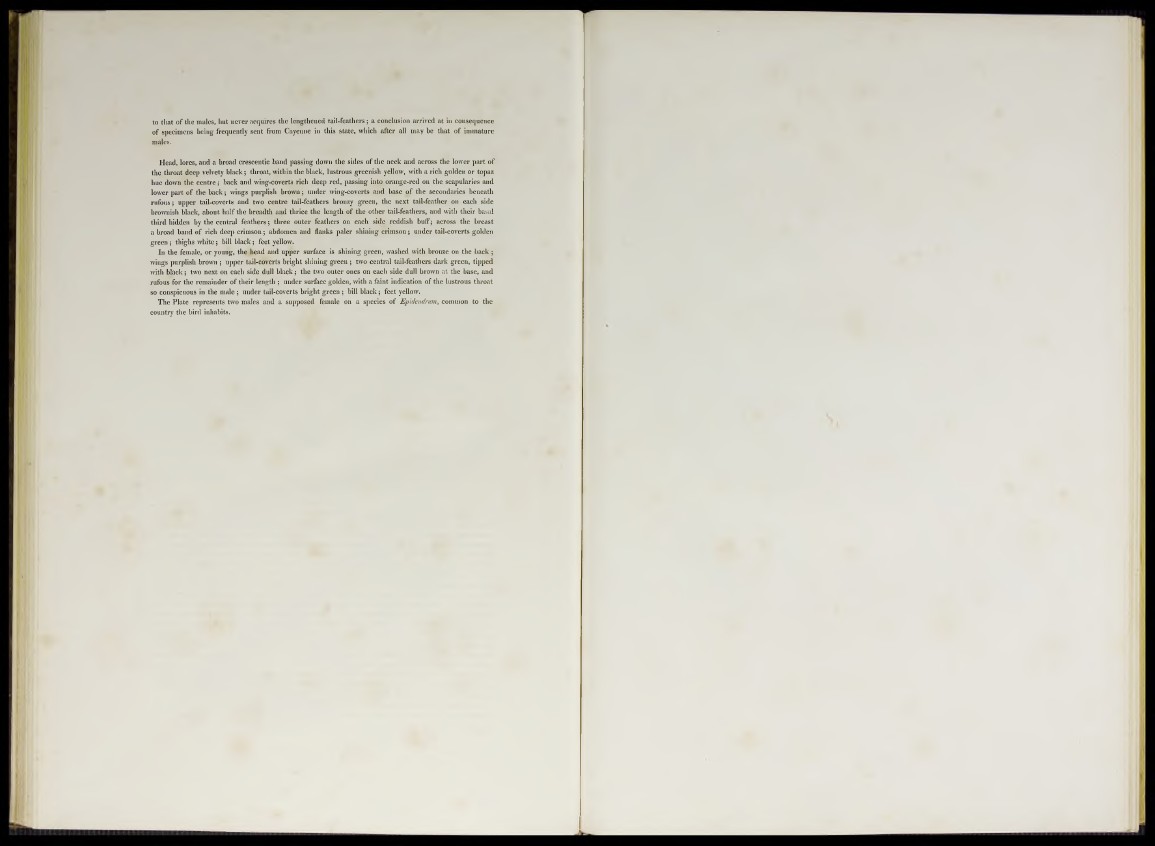
to that of the males, hut never aequires the lengthened tail-feathers; a conclusion arrived at in consequenee
of specimens being frequently sent from Cayenne in this state, which afïter all may be that of immature
males.
Head, lores, and a broad crescentic band passing down the sides of the neck and across the lower part of
the throat deep velvety black; throat, witliin the black, lustrous greenish yellow, with a ricli golden or topaz
hue down the centre; back and wing-coverts rich deep red, passing into orange-red on the scapularies and
lower part of the back; wings purplish brown; under wing-coverts and base of the secondaries beneath
rufous; upper tail-coverts and two centre tail-feathers bronzy green, the next tail-feather on each side
brownish black, about half the breadth and thrice the length of the other tail-feathers, and with their basal
third hidden by the central feathers; three outer feathers on each side reddish buff; across the breast
a broad band of rich deep crimson; abdomen and flanks paler shining crimson; under tail-coverts golden
green; thighs white; bill black; feet yellow.
In the female, or young, the head and upper surface is shining green, washed with bronze on the back ;
wings purplish brown ; upper tail-coverts bright shining green ; two central tail-feathers dark green, tipped
with black; two next on each side dull black; the two outer ones on each side dull brown at the base, and
rufous for the remainder of their length ; under surface golden, with a faint indication of the lustrous throat
so conspicuous in the male; under tail-coverts bright green; bill black; feet yellow.
The Plate represents two males and a supposed female on a species of Epidendrum, common to the
country the bird inhabits.